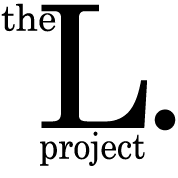OTHER PROJECTS
My newest project, design.data.culture.code, is my thought stream on the digital human. Articles focus on the confluence of cyberspace and culture and how technology plays a part in design, art, and advocacy. The project launched at the start of 2018.
During the winter and spring of 2018 I will be spending time at the Library and Archives Canada (LAC) as a “Wikipedian-in-Residence.” This type of residency is a pilot initiative by GLAM. The acronym stands for Galleries, Libraries, Archives and Museums. GLAM is an international group of professionals working in cultural institutions that support “open access, freely-reuseable content” on the internet. I will be working with LAC’s digital archives and physical repository to consider where content can be placed in wiki sources. I will also be considering how that content can reach those who it would be of value to for their own research. This part of the project will include outreach and possible events. As an initial case study, the Haldimand Proclamation, a 1784 land agreement between Six Nations and the Governor of the Province of Quebec, will be explored.
I launched Mixed Bag Mag the summer of 2012 as an online magazine with a curatorial focus on the psychological spaces that cultural provocateurs create allowing for deep cultural transformation.
Much of the content featured in Mixed Bag Mag promotes the initiatives of people who are responding to the pressing current issues in Canada today – Missing and Murdered Indigenous Women, Black Lives Matter, the Truth and Reconciliation Commission, and Canada 150. They are exploring and often critiquing this cultural moment we are at.
In the Fall of 2016 to the Spring of 2017 I worked with CIRCLE, the Centre for Indigenous Research Language and Education, at Carleton University. In my time with CIRCLE I created more awareness of their presence on campus, including design, promotion and PR for their events featuring Indigenous female artists and activists Alethea Arnaquq-Baril, Candace Maracle, Leanne Betasamosake Simpson, & Erica Violet Lee. (View portfolio)
POWER PLANT CANADIAN DELEGATION FOR THE CREATIVE TIME SUMMIT AT THE 56th VENICE BIENNALE
August 2015 I travelled with Toronto’s Power Plant Gallery as part of a group of artists and curators from Canada to take part in the Creative Time Summit at the 56th Venice Biennale. Creative Time is a not-for-profit arts organization that “has been producing groundbreaking artist projects for more than 40 years with a belief that art has the power to influence society and inspire global change.” I covered the Biennale in collaboration with the Power Plant and their social media team. The artists included a group whose work is centred around art as social practice – Adrian Blackwell, Deana Bowen, Carole Condé and Karl Beveridge, Jen Delos Reyes, Elle Flanders and Tamira Sawatzky (Public Studio), Justin Langlois, Duane Linklater and Nadiya Myre. Along with myself, other curators who participated were the Power Plant’s Director Gaëtane Verna, Dr. Warren Crichlow (York U), Wanda Nanibush (Art Gallery of Ontario), Dominique Fontaine (Independent), and Anne-Marie Ninacs (Independent). This initiative was supported by PIA (Partners in Art). We made such a fantastic impression that Creative Time will be holding their 2017 Summit in Toronto!
“The Power Plant has been invited by Creative Time to participate in its annual Summit, an international conference dedicated to the intersection of art and social justice. Integrated into one of the world’s most prestigious art events, this year’s Summit will take place August 11-13 as an official offering of the 56th Venice Biennale – All The World’s Futures curated by Okwui Enwezor.”
WE ARE CITIES NATIONAL CAMPAIGN
Toronto’s Evergreen Brickworks is an organization “dedicated to making cities flourish.” In 2014 they launched the #WeAreCities Campaign, a national campaign to leverage the power of communities to improve and enrich Canadian cities. Through a series of community lead roundtables the campaign’s goal was to engage Canadians “across the country to shape a vision and action plan for how we can build livable cities—healthy places to live, work and play.” In Ottawa, I facilitated roundtables around “decolonizing the capital” looking at ways that citizens could promote improved understanding between Indigenous and Immigrant populations in order to create cities where the mythology of multiculturalism doesn’t obscure the realities and needs of the urban Indigenous population.
In the fall of 2014 His Excellency the Right and Honourable David Johnston, the Governor General of Canada, convened a think tank at Rideau Hall. The purpose of the think tank was to bring together a diverse group of young professionals to brainstorm about what a “foundation for Canada” would look like and how it would serve the people of Canada. Each Governor General’s legacy, as they leave office, is to create a charitable foundation. Governor General David Johnston’s vision is a foundation that funds work that promotes a more “compassionate Canada.” 40 of us were tasked with applying design thinking approaches in consideration of all aspects of the Rideau Hall Foundation, from branding to outreach. It was a truly radical weekend where I witnessed the best of what this generation of designers, branding strategists, activists and artists have to offer cultural transformation in Canada.
